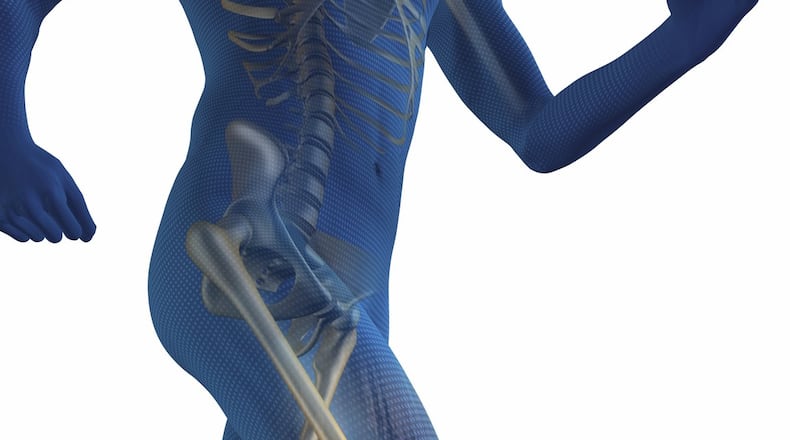››RELATED: Diabetes and how it affects feet
People who put excess stress on joints or who do the same kinds of movements every day, such as athletes, carpenters, gardeners and data entry workers, are at heightened risk for these ailments.
Bursitis
Bursae are small fluid-filled sacs that act as cushions around joints. Common sites of inflammation include the shoulder, elbow, and hip.
The causes and risk factors for bursitis include:
- Repetitive movement
- Injury
- Other related conditions, such as arthritis
- Infection
››RELATED: Back-to-school safety: Know the rules?
Symptoms of bursitis are:
- Aching
- Stiffness
- Pain with movement
- Tender to touch
- Swelling
Treatment often includes activity modification, home exercises, therapy, medications and sometimes injections.
Tendonitis
Tendonitis can be mistaken for arthritis because tendons help muscles move joints. Tendons are thick, cordlike structures that attach muscles to bone. Tendonitis can occur from repetitive movements, injury and other related conditions. Some common forms of tendonitis are tennis elbow, swimmer’s shoulder and jumper’s knee.
Your primary care physician can recommend treatment to reduce pain and help preserve movement. But if the pain doesn’t go away, they may provide a referral to a rheumatologist, orthopedic surgeon or physical therapist for specialized treatment.
Symptoms include pain with movement and a joint that’s tender to touch.
Treatment includes:
- Rest
- Hot and cold therapies
- Medications as directed
- Physical therapy
- Modified activities
Osteoarthritis
The most common type of arthritis is osteoarthritis. Over time, the smooth surfaces on the ends of the bones wear away, creating a rough surface. This leads to pain, swelling, and stiffness. Mild to moderate symptoms can be managed with the help of a physician, but joint replacement may be necessary if symptoms are severe.
Causes and risk factors for osteoarthritis include:
- Obesity
- Family history
- Advanced age
- Previous injury
Symptoms include:
- Swelling
- Pain
- Stiffness
- Decreased joint motion
There are a variety of ways to treat osteoarthritis:
- Maintain a healthy body weight.
- Get regular physical activity.
- Avoid excessive repetitive movements.
- Try hot and cold therapies.
- Use assistive devices as needed.
- Take over-the-counter anti-inflammatory medication as directed.
- Do modified activities.
“Orthopedic specialists treat everything from common arthritis and sports-related injuries to joints that need the latest breakthrough procedures in total joint replacement,” Dr. Heckler says. “If you’ve asked yourself, ‘When do I really need to see an orthopedic specialist about my condition?’ the time is now!”
Kettering Health Network is a faith-based, not-for-profit healthcare system. The network has eight hospitals: Grandview, Kettering, Sycamore, Southview, Greene Memorial, Fort Hamilton, Kettering Behavioral Health and Soin.
About the Author
